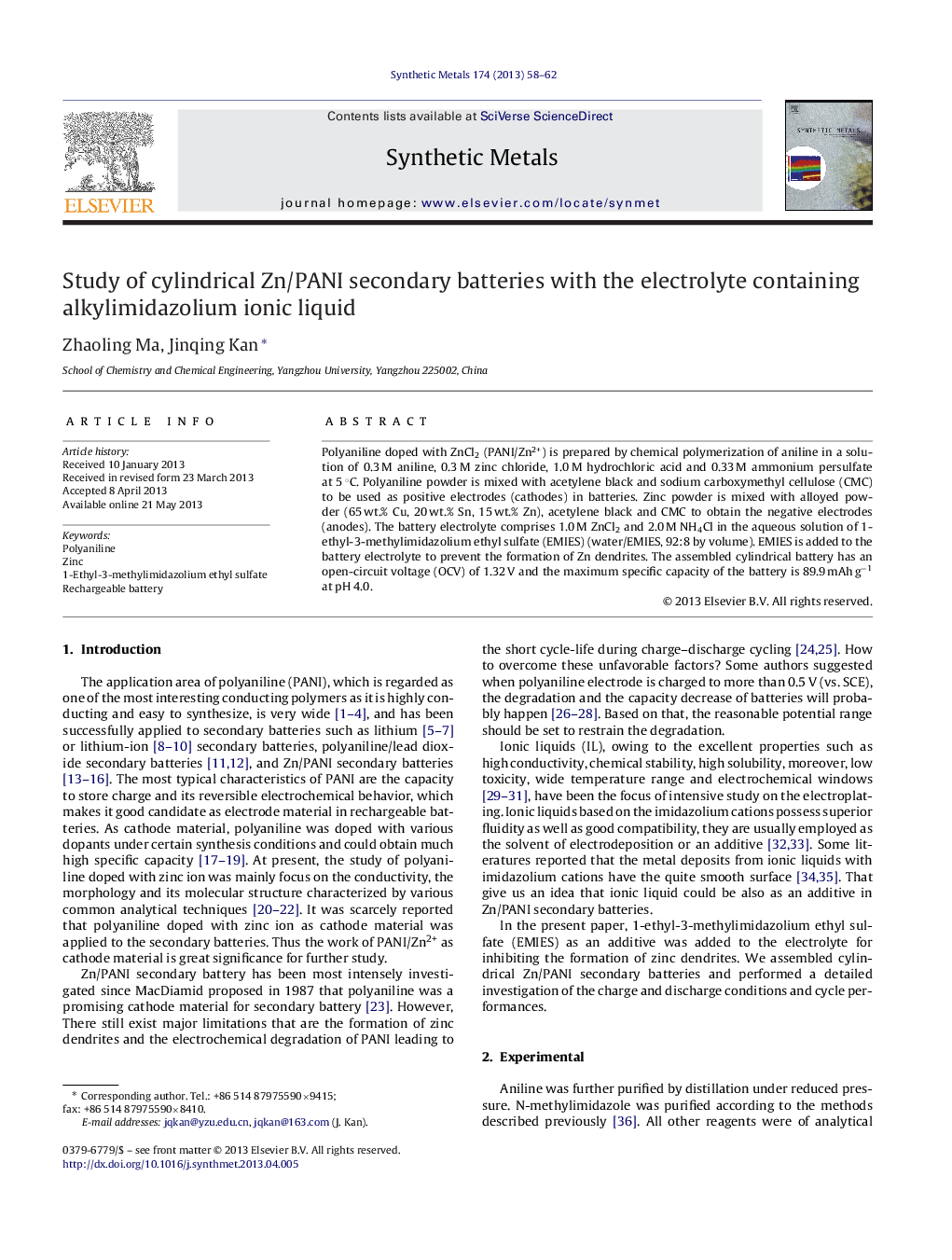| Article ID | Journal | Published Year | Pages | File Type |
|---|---|---|---|---|
| 1441290 | Synthetic Metals | 2013 | 5 Pages |
•Polyaniline doped with ZnCl2 as cathode material in the cylindrical Zn/PANI batteries.•Zn dendrites were inhibited by 1-ethyl-3-methylimidazolium ethyl sulfate.•Much better electrochemical stability of PANI was maintained.
Polyaniline doped with ZnCl2 (PANI/Zn2+) is prepared by chemical polymerization of aniline in a solution of 0.3 M aniline, 0.3 M zinc chloride, 1.0 M hydrochloric acid and 0.33 M ammonium persulfate at 5 °C. Polyaniline powder is mixed with acetylene black and sodium carboxymethyl cellulose (CMC) to be used as positive electrodes (cathodes) in batteries. Zinc powder is mixed with alloyed powder (65 wt.% Cu, 20 wt.% Sn, 15 wt.% Zn), acetylene black and CMC to obtain the negative electrodes (anodes). The battery electrolyte comprises 1.0 M ZnCl2 and 2.0 M NH4Cl in the aqueous solution of 1-ethyl-3-methylimidazolium ethyl sulfate (EMIES) (water/EMIES, 92:8 by volume). EMIES is added to the battery electrolyte to prevent the formation of Zn dendrites. The assembled cylindrical battery has an open-circuit voltage (OCV) of 1.32 V and the maximum specific capacity of the battery is 89.9 mAh g−1 at pH 4.0.
Graphical abstractFigure optionsDownload full-size imageDownload as PowerPoint slide
